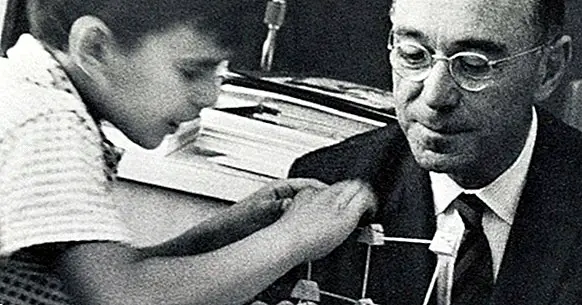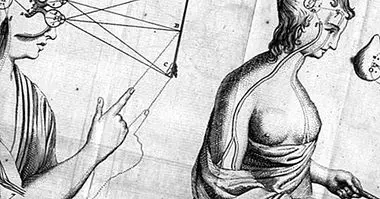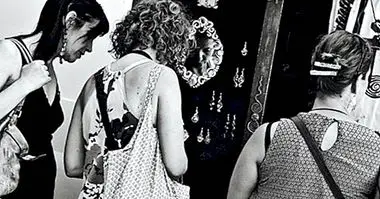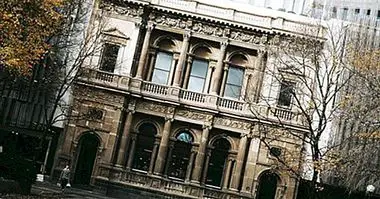The Cognitive Theory of Jerome Bruner
Nowadays, the idea that knowing or learning something consists of a process in which we receive information from the outside, process it and finally interpret it so that we end up having knowledge of the element in question can seem logical and common.
This idea indicates that the individual who knows participates in the process of knowing, shaping and interpreting reality in a direct way. However, this consideration has not always existed, there being multiple theories and ways of conceptualizing the reality that linked the fact of knowing with the exact transfer of objective reality to our consciousness, being the person a passive element between reality and cognition, or that although there is an intermediate step, this is an indecipherable element.
The theories that affirm that the fact of knowing and learning are mediated by a series of internal cognitive processes, manipulating the symbolic elements that we perceive in order to endow reality with a meaning are the so-called cognitivist theories, being among them one of the first the cognitive theory of Jerome Bruner .
Bruner's cognitive theory: active subject and categorization theory
For Jerome Bruner and for the rest of cognitive theories, one of the main elements when it comes to knowing is the active participation of the subject who learns. That is to say, it is not about the individual taking the information from outside without more, but so that it is transformed into knowledge must be processed , worked and endowed with meaning by the subject.
According to Bruner's cognitive theory, in the process of knowing and learning human beings try to categorize the events and elements of reality in sets of equivalent items. Thus, we experience the experiences and the perceived reality by creating concepts from the discrimination of the different stimuli.
In this process, called categorization, the information received from outside is actively worked, being codified and classified with a series of labels or categories in order to enable the understanding of reality. This categorization allows the formation of concepts and the ability to make predictions and make decisions. It is an explanatory model very influenced by computer science , which was based on the operation of the computers of the time.
From the cognitive perspective of Bruner, from the categorization we are able to generate knowledge . These categorizations will not always remain stable and closed, but will vary from the life experience, modifying and expanding. When faced with a reality to be categorized, the individual can establish two types of processes, Concept Formation or known as Concept Attainment.
Concept Formation
This process is typical of early stages of development. The subject proceeds to learn a concept or category, generating by itself the information to classify in the category by him / her created. Common patterns are recognized in several units of information and are unified in certain concepts.
Concept Attainment
The second type of process that can be performed is the identification of properties that allow registering the stimulus in an existing category, created by others. The subject infers the main attributes of the category that has been formed , comparing and contrasting examples that contain the main attributes of the category with other elements that do not possess them. In other words, this process allows the creation of inclusion and exclusion criteria within a category.
Modes of representation of reality according to Bruner's cognitive theory
Based on what has been commented so far, it is deducible that for Bruner learning is active , the individual having a cognitive structure based on the association with previous knowledge that allows him to build knowledge and make inferences.
The representation of reality that is made through cognition can be acquired in three ways or modes, used at different developmental moments of development due to the need for sufficient cognitive resources as they become more complicated. These modes of representation are not mutually exclusive, and several can be applied at the same time to facilitate learning.
Enactive representation
In this mode, Knowledge is acquired through action and direct interaction with the element to be known . This modality to represent reality is typical of initial stages of development, that is, in the first years of life. It is the type of representation obtained with procedural learning, such as learning to go by car or bicycle, or using cutlery to eat.
Iconic representation
It is known through the iconic mode when recognizable and non-symbolic visual elements are used , like a photograph or drawing. It is after three years that the majority of boys and girls are able to use this type of representation, due to their higher level of development.
Symbolic representation
Knowing in a symbolic way implies that information is obtained through symbols, such as words, concepts, abstractions and written language. The level of intellectual development necessary for this type of representation is much higher than the previous ones , because it requires having the capacity for abstraction and recognition of symbols and their meaning. It is considered that this type of representation has emerged around the age of six in the majority of boys and girls.
Applications of cognitive theory in education
Learning is the means through which human beings and other organisms acquire information and knowledge of the environment. For this reason, Bruner's cognitive theory has served and in fact has focused largely on promoting learning processes and development since childhood, although his perspective becomes constructivist.
For Bruner, education consists of the inculcation of skills and knowledge through the representation of what is already known and what is intended to be known, so that the individual can generalize knowledge, taking into account the particularities of each knowledge.
The concept of scaffolding
Another of the fundamental concepts in Bruner's theory, in this case from a constructivist conception, is the concept of scaffolding. For Bruner, the learning or process by which we obtain knowledge must be facilitated by the provision of external aid . The individual is not the only source of learning, but from outside you can create facilities so that these "fit" into the level of learning of the other person and, thus, improve the quality and speed of education.
These aids have to be awarded in a graduated way, providing a great level of help at the beginning or in the presence of great difficulties so that over time and with the progressive mastery on the part of the apprentice they are withdrawn, giving each time greater autonomy to the individual.
The metaphor of a scaffolding used to build a building is evident, referring to this process of adaptation and transience of the aids as scaffolding.
Importance of values, needs and expectations
The knowledge and even perception of the phenomena have been shown to a large extent dependent on the needs , beliefs and expectations. Seeing how the results do not fit with too high expectations can cause learning to stop because of frustration, while too low expectations can hinder it and prevent potential progress.
An example of the importance of expectations is visible in some experiments, in which, for example, subjects with a low economic level are able to perceive coins as larger due to the greater value they are given.
Giving meaning: work with what is already known
It is also essential to know that new knowledge is based on the old, in what the person already knows, in order to be able to build and modify the new information based on it.
This allows the subject to give a sense to the new information , being able to know not only a decontextualized information but also other cognitions that you can use in your daily life.
In search of learning by discovery
As stipulated in your cognitive theory, for Bruner the subject is an active entity in learning and the process of knowing , which does not limit itself to recording information from the outside but has to operate with it in order to convert it into knowledge. In this sense, it considers that the traditional learning of schools has been based too much on a decontextualized information acquisition process.
In opposition to this proposes a learning by discovery, in which the subject learns and is stimulated to know through curiosity, motivation and self-learning, being the teacher a guide for it.
Bibliographic references:
- Bruner, J. S. (Ed.). (1980). Research on cognitive development. Madrid: Pablo del Río.
- Bruner, J. S. (1981). Mental reality and possible worlds. Madrid: Gedisa.
- Bruner, J. S., Goodnaw, J. J. and Austin, G. A. (1978). The mental process in learning. Madrid: Nancea.
- Guilar, M.E. (2009). Bruner's ideas: from the cognitive revolution to the cultural revolution. Educere, 13; 44, 235-241. University of the Andes, Venezuela.
- Méndez, Z. (2003). Learning and Cognition. San Jose Costa Rica. Publisher: EUNED, sixth reprint.



















